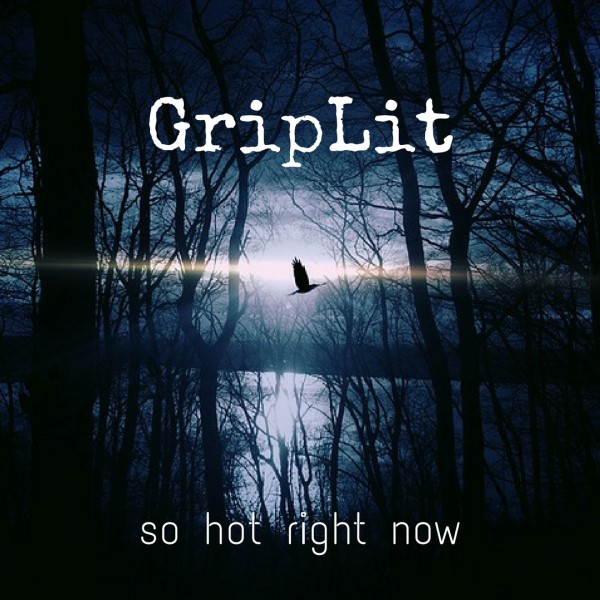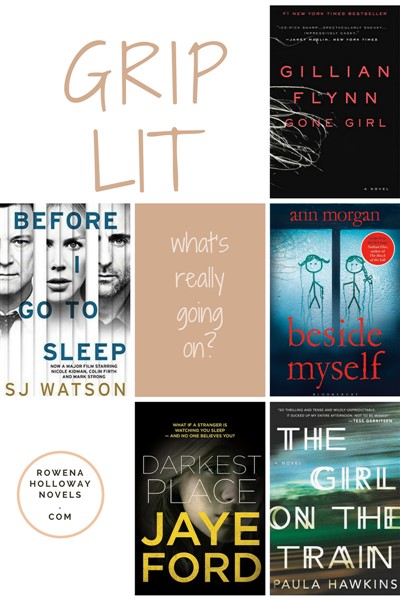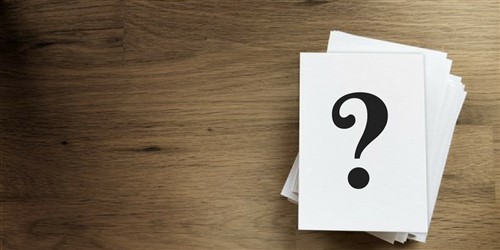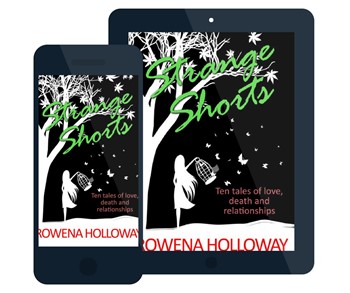Grip Lit: So Hot Right Now
Grip Lit is a phrase sweeping literary circles. Attributed to Marian Keyes, it has since been claimed by journalists (and some publishers) as a handy genre description, each citing the success of ‘Gone Girl’ and ‘Girl on the Train’ as examples of reader interest and it’s validity as a genre.
You all know I write suspense, but did you know that ‘Suspense’ isn’t a genre in and of itself? Type ‘Suspense’ into any bookstore search engine and it will almost always come up as part of another descriptor: romantic suspense, suspense thriller and, my favourite, psychological suspense. So when I started seeing the term ‘Grip Lit’ I had to delve a little deeper into what this actually means.
Like all new terminology, its definition is still in flux, but there are five key features that define literature that falls into this category.
 What is Grip Lit?
What is Grip Lit?
When Marian Keyes used it she meant it as a catch-all typically Marian-Keyesian term for any literature she found gripping—crime and thrillers mostly.
I’ve been reading an awful lot of what I call “grip-lit” – really gripping books – for example The Girl on the Train by Paula Hawkins, Disclaimer by Renée Knight, and others by Clare Mackintosh and Claire Kendal…they’re about very recognisable women who live messy lives.
Marian Keyes
Since then, the term has gained momentum, particularly among literary journalists looking for a new angle. Sophie Hannah, when asked how she felt to be at the forefront of this ‘new rise of feminism’, pointed out it’s not new at all. Another journalist tried arguing it was how ‘women in crime fiction got interesting’. Somewhat incendiary, although the article actually argues that women are no longer victims.
 5 Key Features
5 Key Features
Women feature as the protagonist. She’s flawed, often isolated by circumstance or choice, and is forced to discover her strength to fight back, sometimes against the unknown. She is most often alone, mistrusted, and/or has a history that makes her unreliable.
Point of view is often first person or very close third person. We are either in her head or sitting on her shoulder. Emotions are paramount.
Settings and characters are usually highly relatable. The ordinary is rendered extra-ordinary by the nature of the disturbance. Settings are often domestic. Characters have jobs, desires and fears that readers understand.
Does not feature graphic violence. Violence and danger are a key part of the story but rarely is there a voyeuristic display of blood, gore or torture.
Utilises a complex psychological landscape. Tension comes from the question of what’s really going on? Can you trust the narrator? It contains twist after twist, and misdirection is a key suspense device.
For me, it’s the use of this psychological landscape—the ‘what the hell is going on?’ aspect—that defines the genre.
Examples of the Genre
In Ann Morgan’s Beside Myself we are left to wonder how much of what we’ve read is real and what is imagined. It’s the kind of book you can take as face value and still have a satisfying read, or you can unpick the threads and question the ‘truth’ as told by Ellie. I know what I think, but I won’t ruin it for you.
S J Watson’s Before I Go to Sleep asks you to suspend belief a little further than Morgan, but his story of a woman only able to retain memory while awake is certainly gripping as she tries to unravel her past with no memories to draw on. It’s cleverly done, playing with our beliefs as Christine lurches from one story to another never sure what is true and who might be lying to her.
In Darkest Place Jaye Ford makes us doubt her heroines truth by letting us know she is mentally fragile and has been seeing a psychiatrist. This is a story where no one believes her and she begins to question herself about what is real and what is imagined.
Each of these novels pit ordinary women with ‘ordinary’ lives against foes (real or imagined I’ll leave for your decide) within a shifting psychological landscape.
Is Grip Lit a useful description for writers?
Genre is a short cut both for publishers and readers. Booksellers know where to shelve books, readers know what to ask for and publishers know how to market it. Grip-lit captures the imagination.
As writers we need to know our audience and what keeps them glued to the page until The End. That’s the basis of every great story. So whether you write grip-lit, chick-lit, bloke-lit, misery-lit or something-else-lit, know your strengths, know your reader and go for it!
Is Grip Lit a useful description for readers?
I guess this is a question for readers to decide. The boundaries are flexible. It’s likely that if you went into a bookstore (if you can find one these days) and asked for the latest grip-lit you’d be recommended a variety of genres. As Marian Keyes said, it applies to ‘really gripping books’. What grips me may not grip you, and sometimes what grips us may depend on what else is going on in our life.
Until next time,

 So what type of books do you find ‘really gripping’? Do they fit the five features outlined above?
So what type of books do you find ‘really gripping’? Do they fit the five features outlined above?
Share your thoughts in the reply box below. I love to hear from you.
If you enjoyed this article, why not join my suspense community? I share with you my favourite books, latest news and reviews, and each newsletter includes an article about writing, reading or the inspiration behind one of my novels. And as a community member you get this before anyone else. You can also grab a free eBook anthology of short stories by yours truly!

Ten gripping tales of love and relationships. Includes tasters of each of my novels.
YES! SEND ME MY FREE BOOK

Very informative Rowena! I’d not heard the term, but I love it.
Thanks for that, Rowie. Very informative. Are any publishers using the term Grip Lit yet that you know of? I recently heard Gone Girl and Girl On A Train referred to as Domestic Thrillers. Do you think those two genres are pretty much the same? D
Thanks Lilliana 🙂 I look forward to your steampunk, poetry, grip lit mashup LOL Glad you found it informative.
Hi Diane, from all the reading I did for the article I think it is more of a catchy phrase and a good way to promote rather than a genre classification recognised by the industry. Therefore, it probably has less cache if you’re submitting to a publisher and calling it grip lit. To me those five key factors make it psychological suspense, but the terms Domestic Noir or Domestic Thriller are widely acknowledged in the industry today. As far as I can surmise the ‘domestic’ label is used when the danger comes from within or is aimed at (ordinary) families. R xo